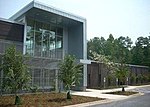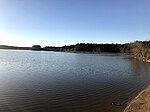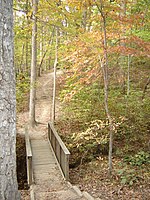Raleigh–Durham International Airport

Raleigh–Durham International Airport (IATA: RDU, ICAO: KRDU, FAA LID: RDU), locally known by its IATA code RDU, is an international airport that serves Raleigh, Durham, and the surrounding Research Triangle region of North Carolina as its main airport. It is located in unincorporated Wake County, but is surrounded by the city of Raleigh to the north and east, and the towns of Cary and Morrisville to the south. The airport covers 5,000 acres (20 km2) and has three runways.As of 2024, RDU offers nonstop passenger service to 59 domestic destinations and 10 international destinations with more than 500 average daily aircraft movements. The RDU Airport Authority is in charge of the airport facilities and operations and is controlled by a board of representatives from the counties of Wake and Durham and the cities of Raleigh and Durham.Raleigh–Durham International Airport is the second-largest airport in the state of North Carolina, behind Charlotte Douglas International Airport. It is an operating base for Avelo Airlines and a focus city for Delta Air Lines. In 2023, RDU served a record of 14.5 million passengers which broke the airports record of 14.2 million passengers set in 2019. Joining the existing international network, RDU announced nonstop service to Frankfurt, Mexico City, and Panama City to begin in 2024.
Excerpt from the Wikipedia article Raleigh–Durham International Airport (License: CC BY-SA 3.0, Authors, Images).Raleigh–Durham International Airport
John Brantley Boulevard,
Geographical coordinates (GPS) Address Website External links Nearby Places Show on map
Geographical coordinates (GPS)
| Latitude | Longitude |
|---|---|
| N 35.877777777778 ° | E -78.7875 ° |
Address
Raleigh-Durham International Airport (RDU Airport)
John Brantley Boulevard
27560
North Carolina, United States
Open on Google Maps







